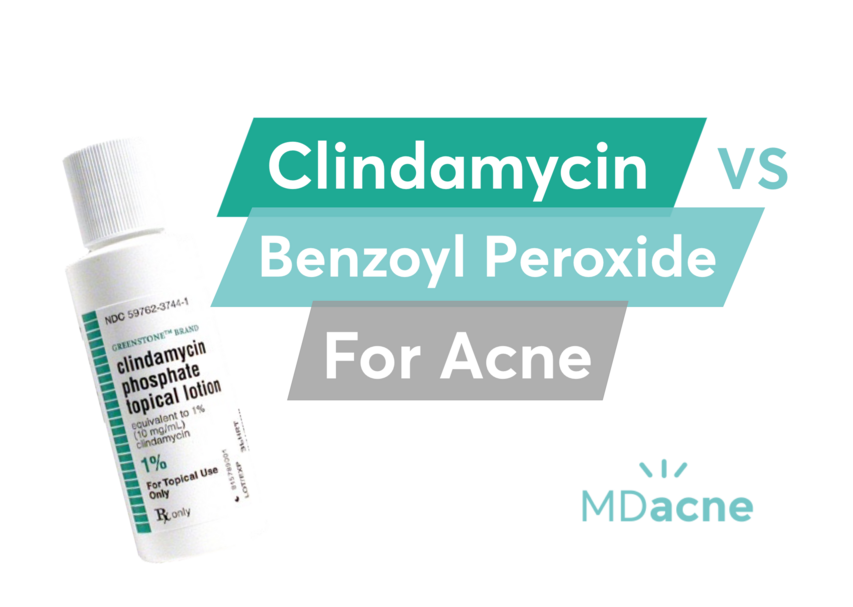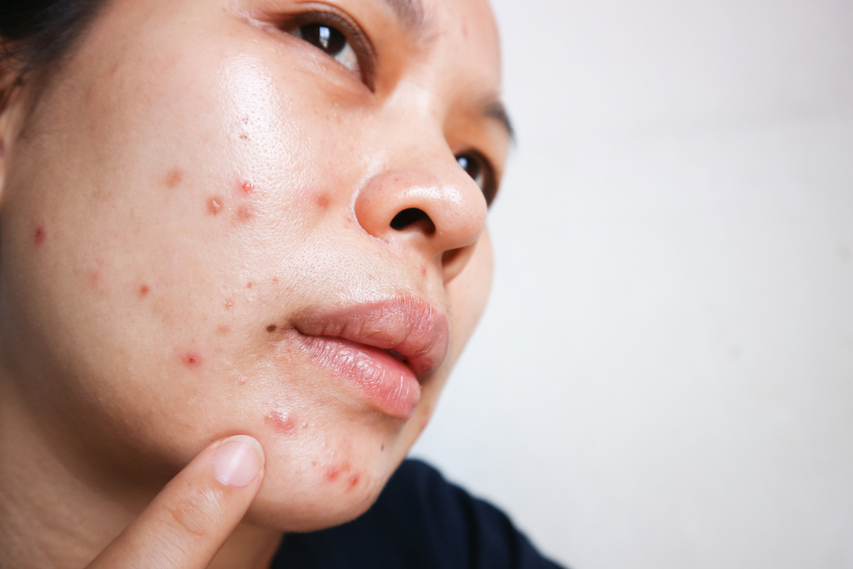Is Clindamycin Better than Benzoyl Peroxide for Acne?
 Clindamycin (brand names: Dalacin T, Zindaclin, Cleocin, Cleocin T, Evoclin) is a type of topical solution and antibiotic that dermatologists have often prescribed for the management of acne. While the prescription rate is declining (for reasons explained below!), it is still used by many today for acne treatment. If you're currently using clindamycin lotion or considering it to help treat your acne, read this first!
Clindamycin (brand names: Dalacin T, Zindaclin, Cleocin, Cleocin T, Evoclin) is a type of topical solution and antibiotic that dermatologists have often prescribed for the management of acne. While the prescription rate is declining (for reasons explained below!), it is still used by many today for acne treatment. If you're currently using clindamycin lotion or considering it to help treat your acne, read this first!
How does clindamycin work to treat acne?
Like other topical antibiotics, Clindamycin (or "clindamycin phosphate") helps treat acne by destroying the acne bacteria (p. acnes) on the skin and preventing further growth of bacteria. It has been prescribed to help treat mild acne, moderate acne, and even severe inflammatory acne. While Clindamycin can help control acne for some time, it can also come with some severe side effects.
What is the difference between benzoyl peroxide and clindamycin?
Like Clindamycin, benzoyl peroxide also fights acne bacteria, but it does so differently. Benzoyl peroxide kills the acne bacteria on contact, preventing them from developing resistance. Because of this, benzoyl peroxide medications do not lose their efficacy even with long-term use. The American Academy of Dermatology placed Benzoyl peroxide at the top of the list of anti-acne topical treatments, while clindamycin and other topical antibiotics, such as erythromycin, are on the bottom of the list.
What are the adverse effects of topical clindamycin used in acne?

There are several downsides to using clindamycin or other topical antibiotics (and oral antibiotics!) for acne treatment. Prolonged use can make acne bacteria resistant to this antibiotic and, ultimately, make acne worse in the future. The risk of bacterial resistance from Clindamycin and other topical antibiotics has led to the American Academy of Dermatology recommending against using such topical antibiotics as a single solution for treating acne.
In addition to the risks of bacterial resistance and worsening of the acne condition in the long term, clindamycin can be absorbed into the blood circulation and affect internal organs. Possible side effects from using clindamycin include skin peeling, dryness, and irritation, while some also report diarrhea, vomiting, nausea, abdominal cramps/pain, and other unpleasant symptoms (according to the FDA).
Is clindamycin or benzoyl peroxide more irritating to the skin?
Dry and general skin irritation should be avoided as much as possible in acne treatment. Once the skin is over-irritated, its protective barrier is damaged. This causes more inflammation, which slows down skin healing and increases the risk of more breakouts and uncomfortable acne lesions (yikes!). Therefore, when choosing an acne treatment protocol, it's essential to consider the risk of irritation. When applied topically to the skin, Clindamycin causes application site burning and itching (up to 11%).
Traditional forms of other acne medications, such as salicylic acid and benzoyl peroxide, can also irritate and dry the skin. Fortunately, new benzoyl peroxide and salicylic acid formulations have been developed with unique microparticles that penetrate the skin more quickly than the standard formations. Combined with other anti-inflammatory ingredients, acne treatment products with these micronized medications show increased efficacy in treating acne vulgaris with reduced irritation. Customizing these medications to a user's skin (different potency of active ingredients) will further maximize effectiveness and minimize redness and irritation.
How much does clindamycin cost?
As a prescription drug, the cost of clindamycin varies from person to person based on their insurance carrier. Without insurance, one bottle of clindamycin costs about $125 (CVS). The cost will be significantly less for those with insurance, though it comes with the added expense of a dermatologist visit to obtain the necessary prescription (typically <$100).
Should you use clindamycin for your acne treatment?
As a previously popular prescription medication, clindamycin can seem like an attractive option to help with acne treatment. However, considering both the adverse side effects, long-term outcomes, and cost, clindamycin is not a good option for treating acne. It should be avoided and replaced with safer alternatives—often available over the counter. New formulations of the highly effective micronized benzoyl peroxide and salicylic acid have been proven effective without long-term adverse effects. They are also more affordable, less irritating, and more effective than clindamycin.
Best Benzoyl Peroxide 2.5% (Amazon).
Best Benzoyl Peroxide 5% (Amazon).
More info on benzoyl peroxide for acne.
To find the right acne treatments for your unique skin, take the free skin assessment by clicking here.


